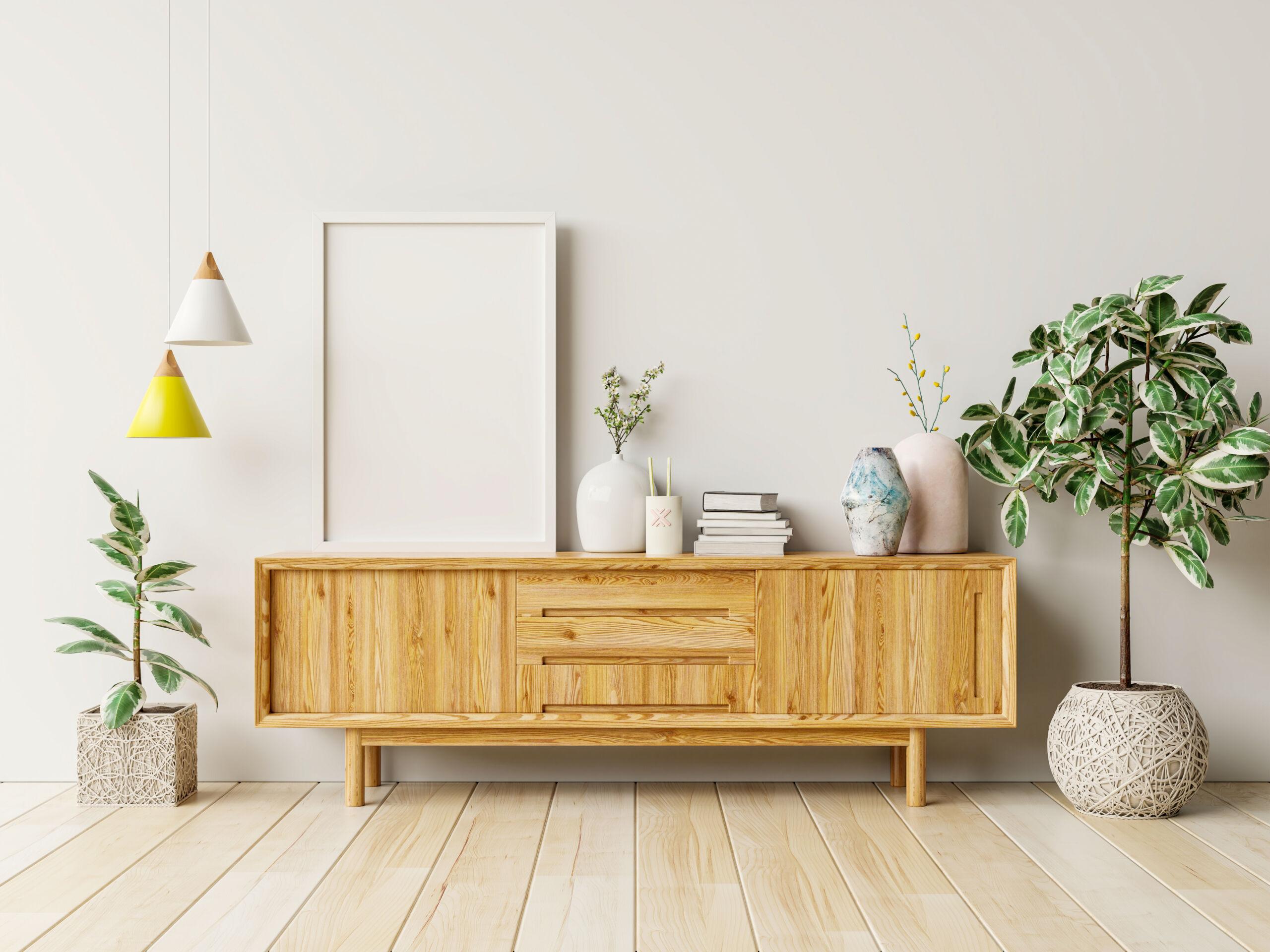Scandinavian Decoration: what is it, when did it appear and how to use it in architecture and interiors
Rustic yet contemporary, minimalist and cozy. This is the essence of Scandinavian decor, which works with a challenging duality, but which results in a pleasant harmony in the environments, becoming a trend among architects and interior designers around the world.
Therefore, in this article we will explain more in depth about the Scandinavian style in decoration. For those who have doubts about its use or want to know the history and characteristics of this décor, continue reading the text.
Enjoy reading!
Scandinavian culture
The term “Scandinavia” originated at the time of the ancient Roman Empire. It was believed, among the inhabitants of Rome, that the lands situated to the north of Germania formed an island called Scania: hence the emergence of the word.
Formed by the Nordic countries Denmark, Norway and Sweden, Scandinavia is located in the northern region of Europe. From a geographical point of view, Norway and Sweden are the Scandinavian countries, but, as a matter of cultural values, Denmark is also part of this group.
And what do these three countries have in common? Have you ever noticed that Scandinavian nations occupy the top of any ranking of countries that stand out for their quality of life? In 2019, in the World Happiness Report 2019 survey – which monitors the state of happiness in the world through experts supported by data from the United Nations (UN) – which analyzed 156 countries, Scandinavia was among the top 10, being the Denmark in second place.
But why are these countries among the happiest in the world? The answer to this may lie in your lifestyle.
As it is a region where winter is harsh and days do not usually have more than 7 hours of sunshine, a typical local culture was created that values “spending more time indoors”. As a result, it became common to invest in the decoration and well-being of the family. Giving preference to transforming the home into a real nest, with a lot of coziness and comfort to live and receive friends.
This behavior has become so ingrained in people’s essence that over the years it has become a world reference in decor and lifestyle.
In addition, residents of this region are known for leading an uncomplicated life and adopting the maxim that simplicity is needed above all. All this reflects in a way of life in which the predominance is not the problems, but the good times.
How did the Scandinavian style come about?
Although the search for Scandinavian decoration is recent, its origins are quite old. The main influence of the style comes from the Swedish artist Carl Larsson, born in Stockholm in the year 1853.
Carl was an artist who turned his home into a creative space, portraying his family’s daily life in paintings, while his wife—the artist Karin Bergoo, whom he met in 1882—developed design and interior design work.
“The experience of the two and the way they mixed elements, created projects and decorated the house, in a very contemporary way and ahead of its time, gave rise to the true Scandinavian style. Today, the house has become a museum and cultural space, where it is possible to live and feel the experience of the artistic family.”
Despite being considered its earliest origin, Scandinavian decor only gained strength from the 20th century, more precisely after the 1950s.
In addition to Carl Larsson, architects and designers from different lines are part of the history of Scandinavian design. Among them are: Arne Jacobsen, Verner Panton, Eero Saarinen, Nanna Ditzel and Louise Campbell.
Another great name that marked Scandinavian architecture and design was the Dane Hans Wegner, who became known worldwide for adding organic functionality to modernism in Denmark.
What is Scandinavian decor?
As the name suggests, and as mentioned before, the Scandinavian decoration has Nordic roots. Inspired by her own landscapes and local crafts, she also uses references to the tones of the region’s climate, which is always very cold and dark, with long nights and endless winters.
In contrast to the very harsh winter with low light, the Scandinavian decor has a simple and minimalist style with a predominance of neutral colors – light tones and white are valued – and spacious spaces that help in the natural lighting of the environments through large windows and openings to the sun. So that nature integrates into the home and green starts to bring contrast and warmth into the home.
Do you know that environment that just looking at it seems to be very cozy and pleasant? It was in this spirit that the Scandinavian decor fell in favor around the world. In it, the details are strategic and make up an inspiring scenario.
It is a combination of classic and traditional elements with some contemporary and rustic points, which can be present in sofas, tables, beds, armchairs and cabinets. This style is marked by the use of straight lines, simple shapes and functionality. Furthermore, the decorative objects are sober and natural.
“Usually, the feeling that the Scandinavian style gives is coziness, tranquility and simplicity.”
Perhaps because of the need to get away from the hustle and bustle of big cities and have a healthier life, Scandinavian decor has gained more strength and is now a big trend.
Main features of Scandinavian-style decor
1. Light and neutral colors
Light, neutral colors dominate the scene. The use of a monochromatic palette – white, grayscale and black – is the signature of Scandinavian architecture. As it is a style originating from countries that have a short day, colors are a key point to make the rooms bright regardless of the lighting outside.
For this reason, white is so used, as it will reflect more light into the environment. Light colors in furniture and walls serve as a diffuser of light. And to break the predominance of white, decorative elements can gain colors, such as grey, beige and nude. Black can be used to create contrast.
2. Lighting
As well as the choice of colors helps in lighting the space, other techniques are also used within this style. After all, for a region that receives an average of only 7 hours of sunlight per day during the winter, having lighting becomes essential.
The properties must have large windows, which allow a better use of natural light. There is also special care with the projection of shadows. Dark corners should be avoided and lighting is valued in order to create a cozy atmosphere.
3. Natural elements
Another striking feature is the reference to the natural. It is a style that focuses on simplicity and prioritizes local raw materials.
The most used materials are those that refer to nature and add comfort and warmth. It’s almost heresy to use Scandinavian-style carpets, for example. For floors and furniture, prefer light wood such as pine or oak. Upholstery, pillows and blankets appear in linen, cotton or wool, always in neutral tones with any strategic points of color. Fur rugs and other organic materials, such as leather and metal, also help to highlight the Scandinavian space, making a beautiful reference to the ancient Nordic peoples.
4. Minimalism
Surely you have heard the expression: “less is more”. This is one of the commandments of minimalism, which has a portion of influence within Scandinavian decoration.
The main premise is that one should not exaggerate when using decorative objects in environments. Excesses must always be avoided. The idea is that the spaces are free and well used. The lines are straight, from the furniture design to the coverings, and everything has an extreme quality.
5. Beauty in imperfection
However, while Scandinavian decor preaches the use of few accessories, behind this commandment there is a charm that is the valorization of imperfection. Similar to the characteristics of the Wabi Sabi style, – Japanese ideology – having some elements strategically “out of order”, such as paintings on the floor, objects loose around the environment and lighting with apparent wires, bring life to the home.
6. Simplicity
According to My Scandinavian Home blogger Niki Brantmark:
“Scandinavian style has a tradition of striving to ensure that everyone has access to good design, not just the elite.”
This is due to the fact that in the decoration of environments of this type, materials that are available in nature and have more rustic characteristics can be used. It is not necessary to invest a lot of money to decorate a room or an entire apartment. In addition, this style inspires the practice of DIY (Do it yourself).
As Lina Bo Bardi (great architect of the 20th century in Brazil) would say:
“There is a taste of victory and charm in the condition of being simple. It doesn’t take a lot to be a lot.”
7. Technology free spaces
Nowadays we live in a time where the use of social networks and technological resources prevails. Even more in view of the current pandemic scenario in which many find themselves in their own homes in social isolation for months. The line between professional and personal life that was once thin, is now almost impossible to see and separate.
Hence the tendency of Scandinavian spaces to create spaces for people to be free and allow themselves to disconnect from the world. The purpose of these places is to create intimate and welcoming environments, so that you can rest after a busy day at work, relax listening to good music, meditating, etc.
An example of this is the Hygge style, very popular in Denmark. A Nordic concept of comfort and well-being that can be applied in everyday life and that preaches the importance of moments of tranquility.
Finally, at its core, Scandinavian decor seeks to improve people’s daily lives within their homes. And for that, we saw in this article that some characteristics must be followed and it is necessary to preserve some principles such as:
- The use of light and neutral colors;
- The enhancement of natural lighting;
- The use of natural elements;
- The breadth of the environment;
- Simplicity and imperfection;
- Minimalism;
- Technology free spaces;
If you liked the tips, leave a comment! I’d love to hear from you!



[…] Do you know the Scandinavian decor? See more tips on our blog! Click here!!! […]
[…] by those spaces that look like they were taken from an interior design magazine, such as the minimalist coffee corner that is very fashionable and looks beautiful in any […]